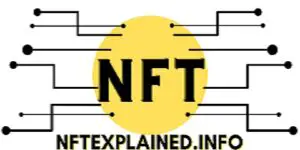
An NFT (non-fungible token) is a unique digital asset stored on a blockchain that provides verifiable proof of ownership. NFTs are immutable, meaning they cannot be deleted once minted. However, they can be “burned” – removing them from circulation by sending them to an inaccessible or “burn” address.
This article explains the concept of burning NFTs, how it’s done, why someone might burn an NFT, and what gives NFTs value.
What Does It Mean to Burn an NFT?
When an NFT is minted on the blockchain, it is permanently stored on the network. Burning an NFT means transferring it to a wallet address that no one can access—commonly known as a black hole or burn address (e.g., 0x000…0000). This process doesn’t delete the NFT from the blockchain but renders it irretrievable, effectively removing it from circulation. The NFT will remain recorded on the blockchain, but it will no longer be accessible or tradable.
Burning NFTs is similar to the practice of token burning in cryptocurrencies, where digital assets are intentionally destroyed to reduce supply. This can increase scarcity and, potentially, value.
How Do I Burn an NFT?
Burning an NFT involves transferring the token to a wallet address that is intentionally inaccessible. To do this, follow these steps:
- Access the wallet where your NFT is stored.
- Initiate a transfer and input the burn address (e.g., 0x000…0000).
- Pay the necessary gas fees to complete the transaction.
Once sent, the NFT cannot be retrieved, and it will remain locked in the burn address forever.
Why Would Someone Burn an NFT or Cryptocurrency?
Burning NFTs may seem counterintuitive, but there are reasons why this practice is used:
- Supply Control: By burning NFTs, creators or companies can reduce the supply of their tokens, increasing scarcity and potentially driving up value. Binance, for example, has been burning BNB tokens quarterly as part of its goal to reduce total supply by 50%. These burns are publicly recorded and verifiable on the blockchain.
- Correction of Mistakes: Sometimes, mistakes occur during the minting process, such as duplicating NFTs or issuing incorrect metadata. Burning is a way to remove these errors from circulation.
- Economic Strategy: Some projects burn NFTs to generate buzz or maintain their ecosystem’s health by managing token supply and demand dynamics. This deflationary strategy can help support price stability and increase long-term value.
How to Delete an NFT on OpenSea
It’s essential to note that once an NFT is minted, it cannot be fully deleted from the blockchain. However, if an NFT hasn’t been minted yet, OpenSea offers the option to delete it:
- Go to your profile and click “My Collection.”
- Select the item you want to delete, click “Edit,” and then choose “Delete Item.” This option only applies to unminted NFTs. Once minted, the only way to remove them from circulation is by burning them.
Screenshot showing where to find the edit section for an NFT that has not yet been minted on OpenSea. The next step would be to hit ‘edit’ and then ‘delete’.
What Gives an NFT Value?
Several factors contribute to the value of an NFT, primarily based on the supply and demand model:
- Scarcity: The limited supply of an NFT can drive up demand, especially when some NFTs are burned, increasing the rarity of the remaining tokens.
- Ownership and Provenance: Blockchain technology allows all ownership and transaction histories to be publicly visible. An NFT’s value can rise if it was previously owned by a notable person or has significant provenance.
- Utility: Some NFTs provide holders with perks such as physical merchandise, access to exclusive content, or even interactions with celebrities or athletes. These benefits enhance an NFT’s appeal and overall value.
Screenshot is provided to show that all previous transactions for an NFT are recorded on the blockchain for all users to see.
Conclusion
Burning an NFT is a significant action that affects supply, scarcity, and potentially value. Whether correcting mistakes or increasing scarcity, burning can influence the dynamics of an NFT project. As the NFT space evolves, practices like burning will continue to play a role in shaping the market.
I hope you found this article informative and continue to stay informed with NFT Explained. You can also find us on YouTube! Watch our dedicated video on burning NFTs here!
If you wish to support our educational mission and protect your digital assets, please consider collaborating with our partners by purchasing a Ledger hardware wallet!
